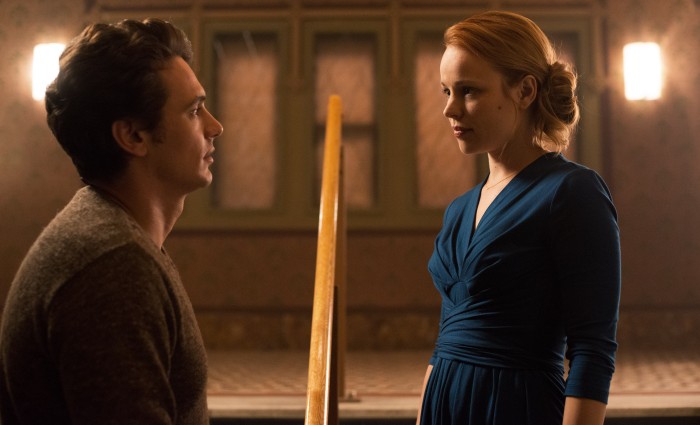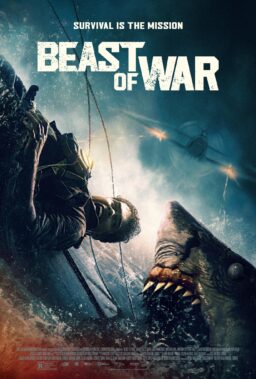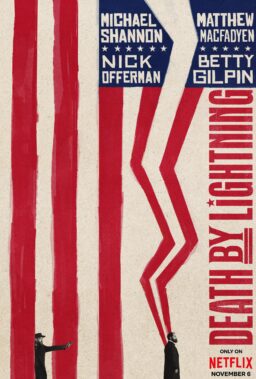Of all the ways poor festival planning manifests itself, one of the most curious is holding press
screenings of films generating obvious anticipation in auditoriums evidently
incapable of accommodating high numbers. This is a tricky science to begin
with, and it’s made even trickier when a festival’s prime location for
in-competition press screenings is temporarily rendered out of action due to
red carpet preparations and/or public showings. When this happens, the bigger
titles are relegated to smaller screens.
There have been
several such instances at the Berlinale this week. The latest involved a
last-minute overflow venue being announced when a press screening of Wim
Wenders’ “Every Thing Will Be Fine” packed out the relatively small Cinemaxx
8—cuing a mad dash by flustered members of the press to the CineStar complex
across the busy road from Potsdamer Platz. Onlookers must have been as bemused
as critics finally were by the film: Wenders’ latest is a curiously acted,
lazily edited misfire, in which a novelist (James Franco) slowly recovers from
the trauma of accidentally killing a boy one day when driving his car. Spanning
a decade, this two-hour humorless trudge through the motions suffers badly from
terrible dialogue, incongruous scenes, wholesale miscasting and purposeless 3D.
This critic was among
the lucky few hundred who scrambled into the tight squeeze of the second
screening—though many others were turned away. Understandably disgruntled,
those who didn’t make the cut will feel even more aggrieved to hear that as
little as fifteen minutes into the film a number of seats had been
vacated—something I’m convinced had less to do with the standard of the film
than the fact that badge-wearing delegates think it’s okay to fight their way
into a packed cinema at the expense of others only to drop out after checking
their cell phones a quarter of an hour in. It was disrespectful to the film, to
the many who didn’t make it and to the festival staff who had done such a great
job in getting the cinema prepared and fully seated inside half an hour.
Whatever one makes of
the unthinkable logistics that can trouble festival planners and attendees
alike, there’s no denying that the Berlin International Film Festival, now in
its 65th edition, generates that often elusive thing others call “buzz”. In the
relative calm that finding a seat in the Wenders press showing provided, one
could overhear one critic telling another that when passing the ticket desks
for public screenings one morning this week, he had observed a long line of
people who’d camped out, possibly overnight, to ensure a chance of nabbing
entry to one of the day’s showings. It was 8am.
One of the great
things about the Berlinale is that, alongside its organized press showings,
industry panels and production markets, it is also a visibly public festival,
with queues and busy cinema lobbies as ubiquitous as the ursine mascot that
adorns those giant red banners outside each screening venue. Good thing we
press get our own screenings for a lot of these films, too: if our silhouetted
fingers against the upward glow of our cell phones don’t irritate you, our need
to approve of every film’s final fade- or cut-to-black with exclamations of
“bravo!” surely will. There’s something deeply embarrassing about such vocalized
flattery—especially when the talents behind such films are seldom actually
present. A hunch: such evangelizing is (and says) more about the delegate than
the film, like the oral equivalent of a 140-character hot take sent out into
the ether while a film’s credits have barely begun to roll.
The professional
pressure for a critic to come down one way or the other on a film is
particularly sharpened at a festival—especially one as premiere-heavy as
Berlin. No qualms here: I’ve filed my ten reviews and counting this week inside
30 minutes to an hour after each film, and reading any of them back doesn’t
leave me wishing I’d had more time to reflect, interpret or even write. What I
do look forward to, once some dust has settled, is revisiting Terrence Malick’s
latest opus, “Knight of Cups”. Whatever else is written about this film in the
coming days (me: totally mesmerized and extremely bored), there’s the horribly
nagging—not to mention rare—sense that a second viewing is required. I say this
having happily claimed the worst thing about giving “Knight of Cups” another
try would be having to sit through it again. Of all the films unveiled this
week, though, this one has imagery rich enough to leave its competitors very
discouraged indeed—and even its detractors haunted by those stunning, fleeting
scenes of Christian Bale walking along a moonlit shoreline.

Another film that
flaunts its imagery is “Cups”’ fellow competition entry “Under Electric
Clouds”, the fourth feature by Alexey German Jr. Set in 2017, amidst the
fallout of a transglobal catastrophe, this Russian-Ukrainian-Polish
co-production suffers from spray-on skepticism about the world’s current
predicament, manifested mostly through inane, mouthpiece dialogue and a kind of
detached, anti-dramatic acting style. Unfolding over seven chapters and running
for nearly two and a half hours, this bloated ode to our ever-deepening crisis
is possibly the most visually beautiful film of its genre since “Children of
Men”—or, if you wish to keep things familial, since “Hard to Be a God”, which
German Jr. helped complete after its director, his father, died.
Marked by a
half-constructed skyscraper awaiting demolition in the distance—ever the
symptom of a failed economy—the sparsely populated riverbank wastelands seen in
“Clouds” aren’t the sort of landscapes one would want to linger in for too
long, but the zooms and tracks that entrap the film’s listless ensemble of
protagonists have a wholly absorbing quality. If late capitalism continues
through this death agony—as indeed it surely will—then at least its final
sunsets, behind the hazy veil of a light pink hue, will warm the heart.

If one of the primary
problems with “Clouds” is that German can’t seem to decide whether his film is
about resigning to the planet’s fate or withstanding it (“you can lean against
something only that resists” is one example of its oblique pseudo-poetry), “The
Club” is an altogether more committed affair. This is not to say Pablo
Larraín’s fifth feature is straightforward: far from it. But this black satire,
on the means to which a corrupt catholic church is willing to go in order to
protect its own, builds multiple ambiguities in its portrait of four exiled
priests and a nun living out their days in La Boca, a small coastal town in Chile.
Larraín’s competition entry boasts thematic ambition, directorial swagger and
optical flare (the film is full of lens distortions).
Others have already
described this film—from the man responsible for a trilogy of works (“Tony
Manero”, “Post Mortem” and “No”) directly exploring life under Pinochet—as
“deeply sacrilegious”, but there are enough moments to suggest that something
even more daring is at work. It’s not just that Larraín’s band of banished
outsiders have dark histories veiled over by the church: in many ways, since
their misuses of power were enabled and perhaps even encouraged by this
untouchably sacred institution, they are themselves victims. Such are the
panoramic implications of Larraín’s allegory. Since their ages link them all to
more repressive times, it’s tempting to think of “The Club” as yet another film
about the military dictatorship: one that is outwardly abusive at the same time
as it prepares the conditions by which it too can be challenged.

Elsewhere in the
lineup competing for the festival’s Golden Bear, the political allegory of “The
Pearl Button”, by Larraín’s fellow Chilean Patricio Guzmán, is more pointed.
It’s as clear, in fact, as the slab of quartz with which it opens. That’s not
to say the allegory is at first obvious: Guzmán’s follow-up to “Nostalgia For
the Light” presents itself as a documentary about water, an element with which
the indigenous Patagonians residing along Chile’s 4.2 km coastline are most
familiar. Water is around us and in us, it predates us and will survive us—and
it’s linked, in obvious ways and otherwise, to the stars we see from earth. But
there are darker things to be said about water too: it’s along the same Chilean
coastline that the Patagonians were dumped by imperialist settlers in the 19th century,
and into which thousands of Chileans were thrown, dead or alive, in the years
following 1973’s CIA-backed coup d’etat.
Even when Guzmán’s
lateral approach risks getting carried away with itself—implying as it does
that these atrocities have a somehow cosmological cause—there’s something
persistently moving in his voiceover narration. And despite the
idiosyncratically wider framework, Guzmán finds horror in the banal: “The Pearl
Button” takes its name from the small garment fastener found attached to a
rusted rail-track at the bottom of the ocean—the only trace left of the human
being who was once violently tied to it. Matter-of-factly revealing how
victims were fixed to these fragments of metal before being buried at sea, the
film is finally a measured but inconsolable cry for all those whose corpses
were never retrieved.











